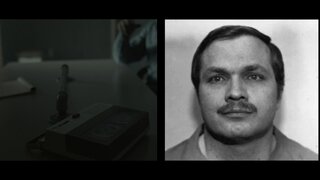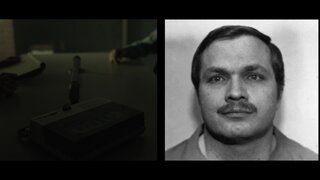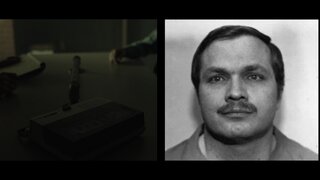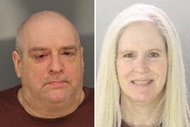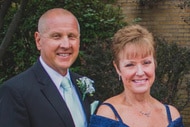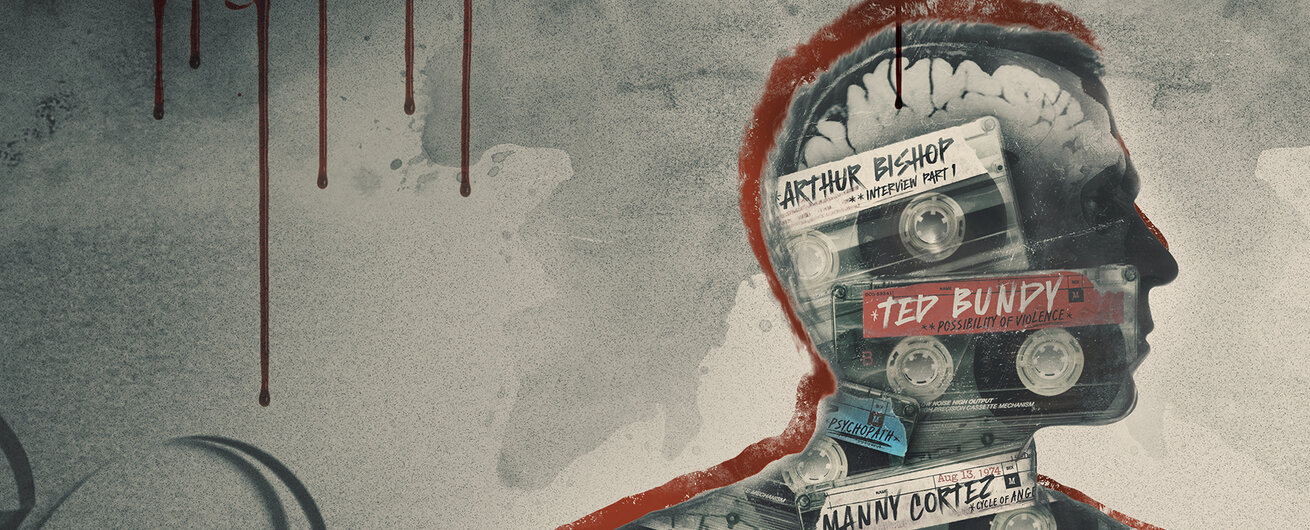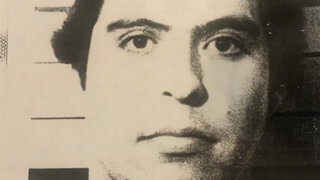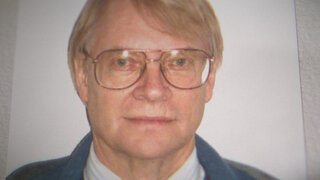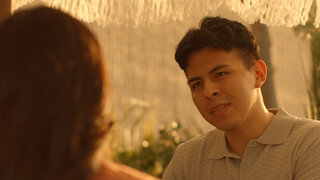Create a free profile to get unlimited access to exclusive videos, breaking news, sweepstakes, and more!
‘I Killed Them All’: Serial Killer Arthur Gary Bishop Chillingly Describes How He Lured And Killed His Victims
“I think in my own mind, it’s killed once. Can you go to hell anymore for killing twice?” serial killer Arthur Gary Bishop explained of how easy it was to take the lives of five young boys.
Arthur Gary Bishop was a former Eagle Scout, one-time Mormon missionary and active volunteer in the community, but the seemingly mild-mannered accountant was hiding a terrifying secret: Bishop was also an accomplished serial killer, claiming the lives of five young boys, ranging in age from 4 to 13 years old, in less than five years, according to "Violent Minds: Killers on Tape."
“He was part of this community, but I really think that’s why he was able to operate the way he did,” Michael George, an investigator for the Salt Lake City district attorney’s office told “Violent Minds: Killers on Tape,” airing Sundays at 7/6c on Oxygen. “He was part of this culture.”
Bishop chillingly described the killings in a prison interview with Al Carlisle, a psychologist at Utah State Prison who was striving to understand what drives someone to murder.
“One reason I killed was because at one point it became enjoyable for me,” Bishop explained in one 1986 interview. “I mean, there was a pleasure there.”
For years, Bishop tried to fight his internal demons while growing up in a conservative Mormon family in Hinckley, Utah. He attended church regularly and was an accomplished Eagle Scout — but even in his teens he was plagued by dark thoughts.
He confided to Carlisle that when he was 14 years old, he saw a younger boy in a swimming hole and fantasized about sexually abusing him.
“He figured in order to sexually fondle him he would have to kill the boy first. That thought shocked him and frightened him initially, however, after that, he entered the beginning stages of pedophilia,” Carlisle would later write.
Just a year or two later, Bishop had his first sexual experience with a boy.
"He was probably 2 or 3 years younger than I am,” Bishop said. “We started playing with each other, and we did that quite a few times.”
In 1971, Bishop was sent by the Mormon church to the Philippines for a two-year mission and while he did want to finish his mission “in good standing” the trip also proved to be a turning point for him.
“What was hard about that was that, uh, these kids run around nude,” he’d later tell Carlisle. “And it was very difficult to turn away and to concentrate on what you were supposed to be doing.”
Bishop realized that “whatever this desire was that I had in me was not going to leave” and succumbed to the feelings, initially finding victims to molest within his own family or while volunteering with the Big Brothers Big Sisters program back in the United States.
“At this point in his life, Art had given up on his attempt to change. It wasn’t that he couldn’t change. It was that he didn’t want to try any longer,” Carlisle wrote.
Bishop’s one-time Little Brother in the program “Michael” spoke to “Violent Minds: Killers on Tape” and described meeting Bishop when he was just 10 years old.
“The first thing I remember about Art is he was fun. He was playful and looking back at it I could see why any little boy would be drawn to Art. He had the cool toys. Art was kind and I think he also tried to make sure that I was having my curiosity about things satisfied,” he said.
The molestation began one day after Michael had a bad headache and Bishop suggested he take a hot bath.
“When I found out about the murders years later, the first place my mind went was all of those times when I could have been one of the ones who died started coming to my mind,” he said. “I really think the only thing that kept me from being one of those numbers was that he didn’t see me as a threat because he had done such a masterful job of keeping me curious and having his trust.”
Bishop was eventually forced to resign from the program. He asked to be ex-communicated from the Mormon Church in 1979, after he realized he was no longer adhering to the faith.
“I just got to the point where on the Sundays I could go to church, I didn’t go anymore, and you just felt [it] slipping away. And when this stuff slips away, you know, this positive stuff that you’ve had in your mind, then you find that a lot of these urges that you fought all your life are beginning to re-emerge strong,” he explained.
Bishop murdered his first victim, 4-year-old Alonzo Daniels, just one month later on Oct. 14, 1979.
According to Bishop, he spotted the young boy playing outside near his apartment complex.
“This first kid wasn’t planned or anything,” he said. “It kinda happened.”
Bishop lured the boy into his house, gave him candy and asked him to sit on his lap. When he began to touch the boy, Daniels told him he was going to tell his mom.
“He pushed my hand away. He says that ‘I’m gonna tell mommy.’ And I thought, what if I get caught? I don’t dare let him go. I should let him go, but I don’t dare,” he told Carlisle.
Once he took the young boy’s life, Bishop admitted the “restraint” he felt holding him back had disappeared.
“It was after that I really felt no taboo against killing, I guess,” he said.
After the murder, Bishop changed his appearance, moved out of the apartment complex and began to go by the name Roger Downs.
By this point, he had also begun caring for a young boy named Jeff, whose father had recently died. Bishop approached the grieving widow and pretended to be a friend of the boy’s father, offering to be a male role model in his life. Jeff began to spend more and time with Bishop, who he called his “step-father.” For Bishop, the unique arrangement served as a way to lure more victims.
He met his second victim, 11-year-old Kim Peterson, after Jeff befriended the boy. When Bishop saw Peterson a few days later, he asked Peterson to come hunting with him for the promise of $20, then drove to the same spot he had dumped Daniels body, took naked photos of him and then shot Peterson in the back.
When Carlisle asked Bishop if he had any reservations about killing the boy, Bishop said he had “very little.”
“With Alonzo, I felt bad after because with him, I had a reason. I was afraid of him telling on me. But with Kim, I think in my own mind, it says well, it’s killed once. Can you go to hell anymore for killing twice?”
Bishop admitted that over time he saw the boys as “no longer human” and believed they were just “merely something to please me.”
On October, 20, 1981, Bishop abducted 4-year-old Danny Davis from a supermarket near his home after promising the boy he could play with and keep toys he had at his home. The kidnapping prompted a massive search effort by law enforcement, but they’d find no sign of the young boy.
The next year, he abducted Troy Ward on June 22, 1983 after picking him up in his car at a corner near the boy’s house.
“The killing urge isn’t always there,” Bishop said of the time between his kills. “Contrary to what everybody seems to believe, you know, I didn’t go around constantly saying, 'hey, I’m gonna kill,’” he said. “I would say for the most part, I killed everybody that I planned to kill. But it was just something that you’d feel so much pressure about something inside the only way to relieve it was to act out that murderous impulse within you.”
His killing spree came to an end after 13-year-old Graeme Cunningham disappeared on July 14, 1983. Investigators were able to link the crime to Bishop — who at the time was going by the name Roger Downs — after they discovered that Cunningham had been friends with Jeff.
According to Salt Lake City Police Det. Don Bell, Cunningham disappeared shortly after receiving a phone call at his home.
“It was shortly after that telephone call that Graeme told his mom, ‘I’m just going to run down to the corner I’ll be right back’ and she goes ‘ok’ and he said ‘love you’ and she said ‘love you’ and he went out the door and was never to be seen again,” Bell recalled.
As police began to search for Cunningham, they talked to his friends about who had been closest to the 13-year-old.
“Most of the boys said, 'Well, we think Graeme likes so and so or so and so, but we’ll tell you who thinks he’s Graeme’s best friend. And we said 'who’s that?' and they go ‘Jeff, Jeff thinks Graeme is his very best friend,'" Bell said. "We would counter that with, ‘well, what does Graeme think?’ and almost all of them said Graeme thinks Jeff is a little weird but he thinks Jeff’s stepdad, a man named Roger Downs is really weird."
One of the boys also reported that Bishop — who was using the name Roger Downs — had pictures of naked boys. Bishop was moved to the top of the list of possible suspects.
Bishop had left town on a trip to California with Jeff, but when he returned about a week after the disappearance, he agreed to talk to police.
While in his own separate room, Jeff confessed that Bishop had been molesting him.
After making the discovery, Bell went to speak with Bishop, who he’d discovered had used various names in recent years and was wanted for embezzlement.
“The longer we talked the more I could tell that he was just lying,” Bell said. “And so, at some point in that interview, which had gone on for about an hour, I confronted him and said I did some investigating, ‘you’re lying, you’re lying to me about who you are.’”
In an unexpected turn, Bishop agreed to tell police “everything” if they would take him to his home. There he showed them a white wedding-type album filled with photos of naked boys in an attempt to make them “understand.”
“My only concern at that time was the Cunningham boy. Maybe Graeme had an accident. What I was trying to do was give him an out, cause a lot of times suspects if you give them an out they’ll talk,” Bell recalled. “He just very calmly looked at me and said ‘oh he’s not hurt’ and I said ‘how can you be sure?’ and he says, ‘cause I killed him. I killed them all.’”
Bell said he was “just blown away” by the chilling confession.
“In the course of my career, I think he was one of the scariest people I ever met,” Bell said.
Bishop was found guilty in 1984 of all five murders and sentenced to death.
As a Mormon himself, Carlisle struggled with agreeing to sit down with the confessed killer, but ultimately decided there could be a benefit to trying to understand Bishop’s mindset.
“It’s tragic that five innocent boys were forced to give up their lives to satisfy Art Bishop’s psychopathic desires,” he’d later write. “Hopefully, we will find a way to recognize when a serious psychological problem is beginning to develop at a point where we can perhaps do something to keep it from becoming psychopathic.”
To learn more about Bishop and other killers, watch "Violent Minds: Killers on Tape," Sundays at 7/6c on Oxygen.

